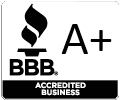When having a company, or entering into a partnership such as a joint venture, it’s insufficient to simply agree with terms and sign a contract. Both parties need to be totally informed in the advantages and disadvantages. This involves due diligence, a process that exposes debts, problem agreements, litigation risks and perceptive property issues that may happen from the purchase. Due diligence risk factors really are a part of the M&A process, and so are particularly significant when finding a private company with tiny history or perhaps information available on it coming from public resources.
A key research element is definitely examining the company’s customers and suppliers to determine how they’re managing organization relationships with these agencies. This includes asking about consumer retention rates, churn amount, recurring revenue and customer attention in terms of contribution to income. Buyers will also want to know in terms of a company’s distributor portfolio, including the supplier’s attractiveness to a lender,, legal compliance, reputation management and operational capabilities.
Enhanced homework, a need of Chapter six of the AML guidelines, will take the form of requesting more detailed information from customers of the source of cash, wealth plus the identity of beneficial owners. This information should be organised in a way that enables the organisation to comply with AML rules during audits.
Research of source chains is known as a vital aspect to consider, especially for clients sourcing nutrients such as container, tantalum and tungsten (3TG). Conducting suitable due diligence can easily alert a great organisation to potential file corruption error risks in some countries, trades, projects or perhaps business associates. The organisation will need to then consider whether it is satisfactory to carry on with the deal in light for these findings, and really should be sure to maintain your risks examined up to date http://www.getvdrtips.net as a matter of good practice.






Post a Comment